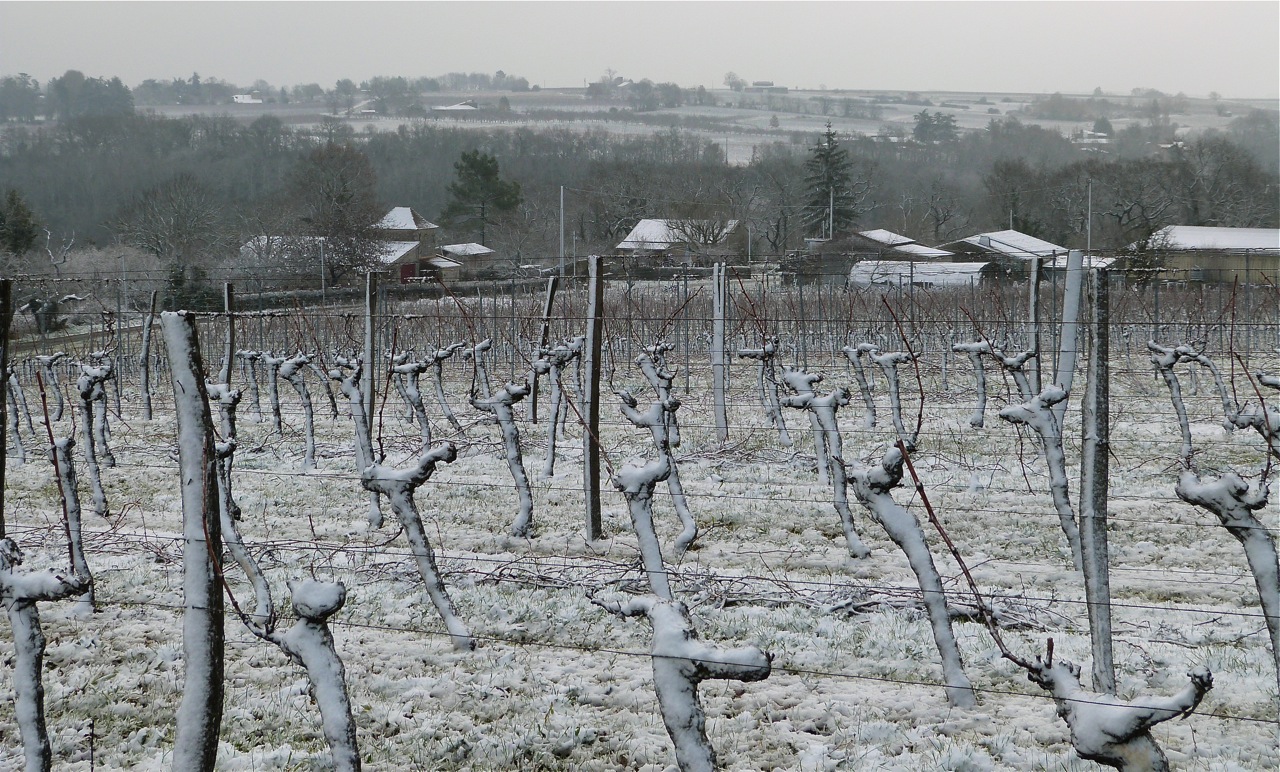 We found their guilty hoof prints where they were digging in the vineyard during the night. Denis saw a culprit in September, lollygagging on a compost pile in the middle of the day. Last summer we came upon one in siesta, splayed out on a cool pile of mud in the woods. Normally the wild boar only venture out in the dark. But as they grow numerous they get comfy, and when they travel in packs the havoc they wreak is considerable – to young trees and especially to young vines.
We found their guilty hoof prints where they were digging in the vineyard during the night. Denis saw a culprit in September, lollygagging on a compost pile in the middle of the day. Last summer we came upon one in siesta, splayed out on a cool pile of mud in the woods. Normally the wild boar only venture out in the dark. But as they grow numerous they get comfy, and when they travel in packs the havoc they wreak is considerable – to young trees and especially to young vines.
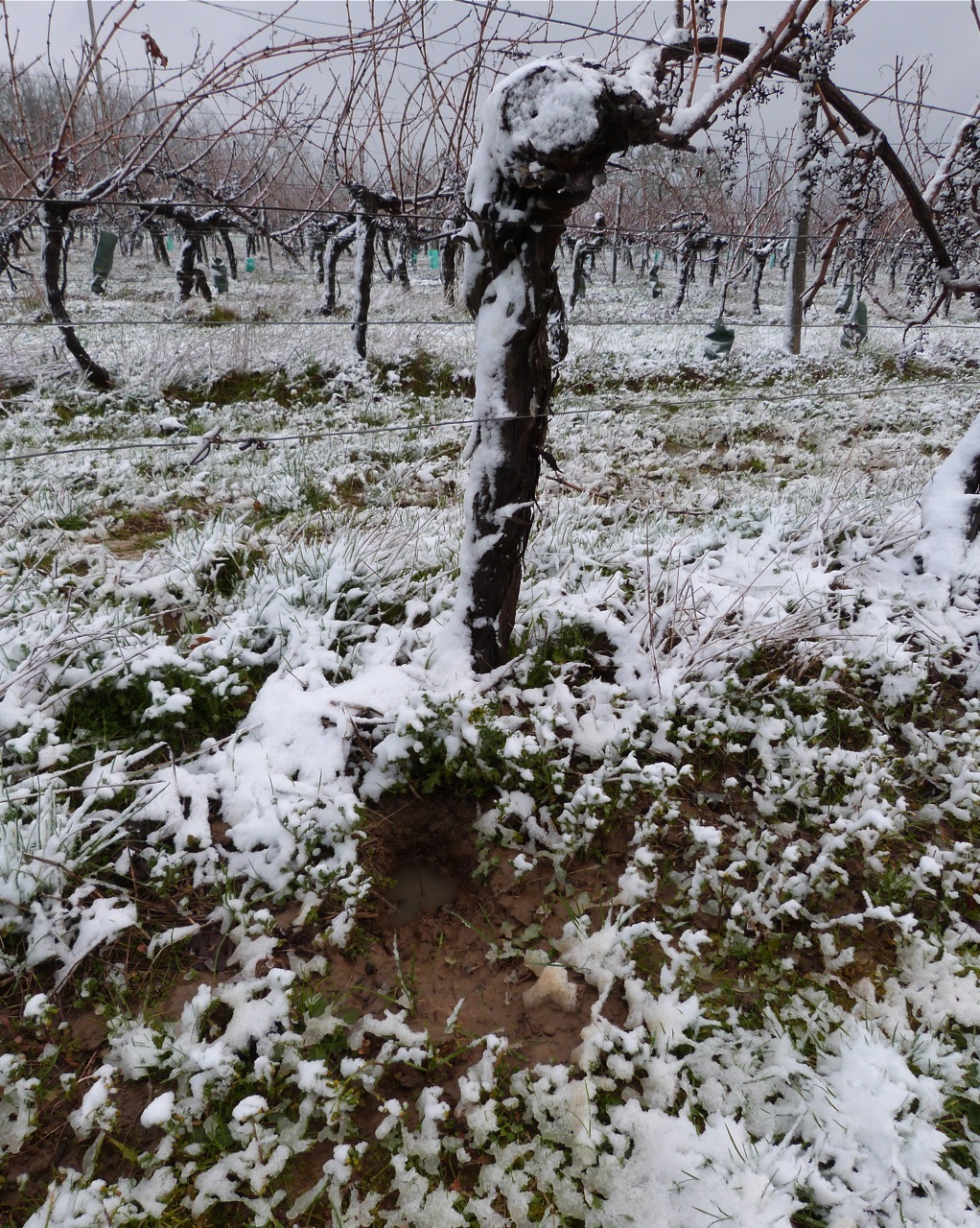
Almost makes you long for the days of the wolf. Almost. Wolves disappeared from France in the 1940’s after being hunted for centuries, a scourge to sheep and humans, and have only recently begun to return.
It’s common knowledge that each time one predator is eliminated, another problem pops up. When the boar in our region become so populous that the damage to vineyards reaches insurance claim proportions, the “National Federation” intervenes and a posse of around 50 hunters shows up with carte blanche to kill every boar in the zone, including mothers and pups. A few years ago 80 animals were felled in an afternoon and burned. Denis called it a “massacre and a waste.”
The alternative is the local hunt club. I know some of our neighbors are opposed: sometimes they put their territory off limits so they can hunt themselves, sometimes they are animal rights protectors. I can appreciate both of these positions. But boar don’t respect property limits, and when the damage to the community vineyards reaches a scale where you make a call to the Federation, my sympathy lies with our hunters.
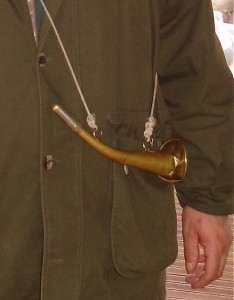
I see them gathered with their maps, dressed in fluorescent jackets and caps on weekends during hunting season – these are our local artisans and the fellows working in the vineyards during the week. Before the sound of shots, I hear the sound of their horn. Their goal is to eliminate one boar at a time to discourage the unchecked growth of the pack; it is the pack that poses the greatest problem. Imagine 25 powerful animals weighing up to 100 pounds each, racing through your vineyard and digging up roots, eating the bark of young plants, smashing the vieilles vignes. Breaking up the pack, especially by killing an adult male, forces the group to scatter and then it takes some time for them to regroup and breed. The same with deer. It’s about culling.
When the hunt is successful (sometimes they catch nothing) one of the hunters calls around with a gift to the property owners who allow access, but don’t hunt. A haunch or shoulder of deer or boar. Another old fashioned custom – if it was hunted on our land, we share in the prize. As much as I have been tempted to study and obtain a hunting license, I am still in the category of eats it, but doesn’t kill it.

Which was not the case for young friend R who came to visit with our son when they were around 16. R had been hunting with his father in the forests of Champagne since he was a child. (Their first assignment is rabattage: shaking the bushes to drive the prey, ahead of the horses – this is “chasse a courre” with all that implies, including the feast afterwards and in this case, home made champagne.) He came to La T with his hunting license and asked Julien’s grandmother for permission to hunt for small game. She looked at his license and said sternly: if you kill, you must prepare, cook and serve.” We imagined he would be discouraged and go off to play monopoly with the others.
Lo and behold, as we sat down to dinner, there was 16 year old R in an apron serving the quail he shot that day. Caught and plucked and cleaned and cooked. It was fabulous.
Which brings me to the prep and eating of our local game, best at this time of year when it’s cold and you’ve been chopping wood or pruning the vines. Even if I haven’t paid my dues at hard labor, I revel in the guiltless pleasure of eating boar and deer. Tender (if properly prepared) full of flavor (not “gamey” if properly prepared) and just down right yummy.
The first time we received a leg of wild boar, I turned to our neighbor Andre for counsel. He was a chef in a past life and he knew just the thing. Most important is that the meat must hang in a cold room for at least 3 weeks so it will tenderize. Then marinate it in two bottles of strong wine (and not the cheap stuff) preferably from the Cotes du Rhone or Burgundy regions. He notes that a Chateauneuf du Pape would be best. He has kindly allowed me to publish his recipe. Being a debutante I cooked up a simplified version, but Andre would never allow a recipe to be shared in less than its entirety.
We served it when our good friends from Chateau Carbonneau came for dinner with their children. John made home made pasta, we drank their special cuvée “La Verrière” (www.chateau-carbonneau.com) and toasted to a friendship that is now in its 4th generation.
Wild Boar Périgourdine Style
by Andre Marechal
Ingredients for Marinade:
Wild Boar or Wild Pig (marinate minimum 3 – 4 days) approximately 3 to 5kg
2 Bottles full-bodied wine (Cotes du Rhone or Burgundy)
3 Large onions
2 Carrots
4 Cloves garlic
15 Juniper berries
3 Bay leaves
Black peppercorns
Additional ingredients:
500g smoked bacon strips (lardons)
Olive oil or duck fat
Ingredients for Sauce:
Port or Madeira
2 litres Veal stock (Maggi Fond de Veau)
300g fresh cream
Small tin of foie gras
Cranberry jelly to taste
Salt and milled black pepper
Arrowroot or cornflour
Recipe for Marinade
Cut meat into large casserole-size cubes
Peel, cut and dice the onion and carrot
Lightly crush the garlic using the palm of your hand on the flat side of a knife
Pour the wine into a large glass or stainless steel bowl
Add the meat, onion, carrot, garlic, bay leaves, juniper berries, and black peppercorns
Cover or film wrap and place in the refrigerator for 3 to 4 days
Chef’s Tip: a large pinch of Szechuan pepper will pleasantly enhance the flavour of this dish
Recipe for Meat:
Lightly brown the bacon strips and reserve
Remove the meat from the marinade and dry the pieces with kitchen paper
Seal the meat in small amounts in a frying pan in the fat over a high heat until coloured on all sides, deglazing with the marinade between batches and reserve
Place the meat with the bacon strips in a large cast iron saucepan covered with the marinade and bring to the boil
Remove any froth that may form on the surface
Cover with a lid and simmer over a low heat until tender (2 to 3 hours, checking from time to time)
Recipe for Sauce:
Place Port or Madeira in a saucepan and reduce until syrupy
Add part of the cooked meat strained marinade and reduce by half
Add the veal stock and reduce by half
Add the fresh cream and reduce if required
Add the foie gras stirring delicately with a small whisk until melted
Add the cranberry jelly stirring delicately with a small whisk until melted
Season with salt and pepper to taste
Thicken sauce if required with arrowroot or cornflower
Chef’s Tip: Chopped black truffle will delightfully enhance this sauce
Ideal with with Sarladaise potatoes
This recipe is ideal with venison, game, and surprisingly, leg of lamb
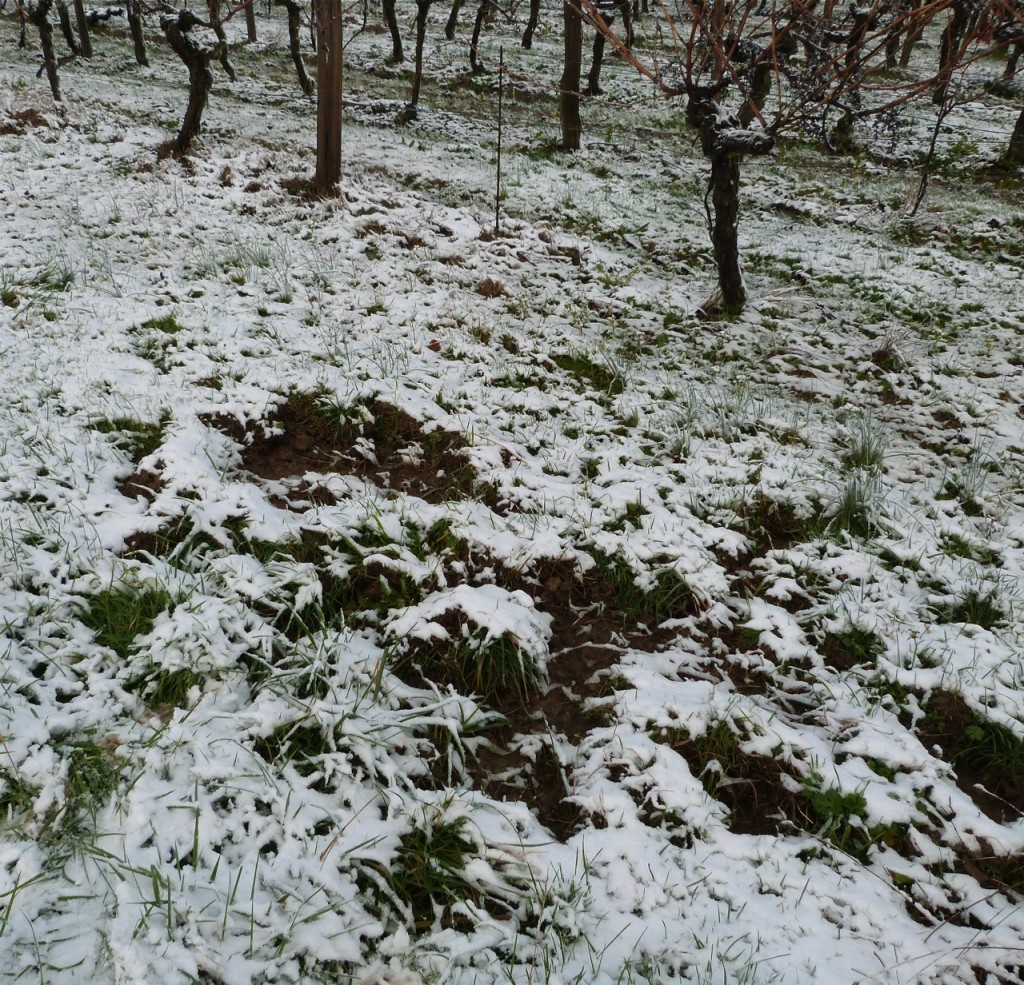


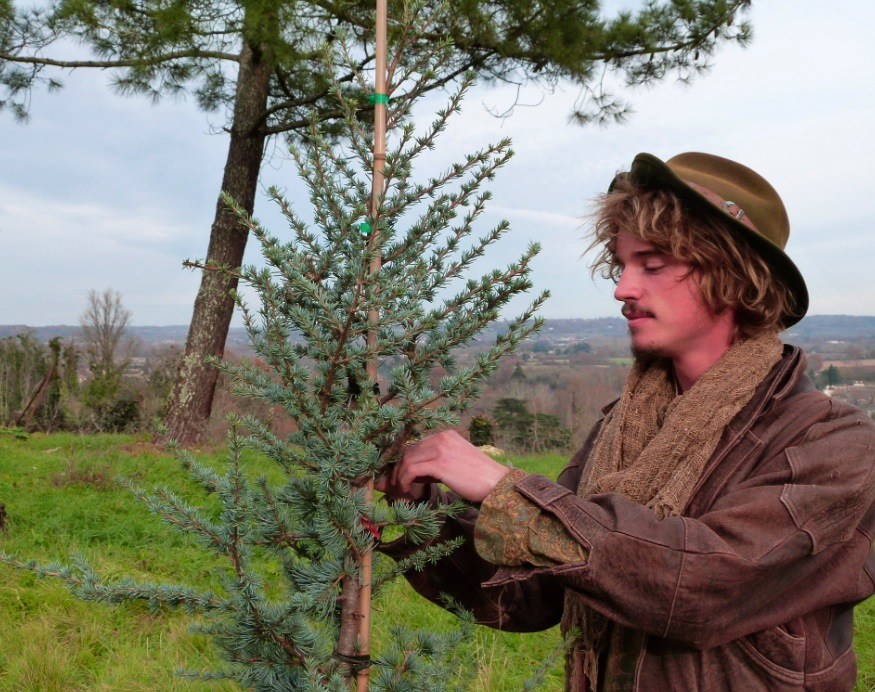
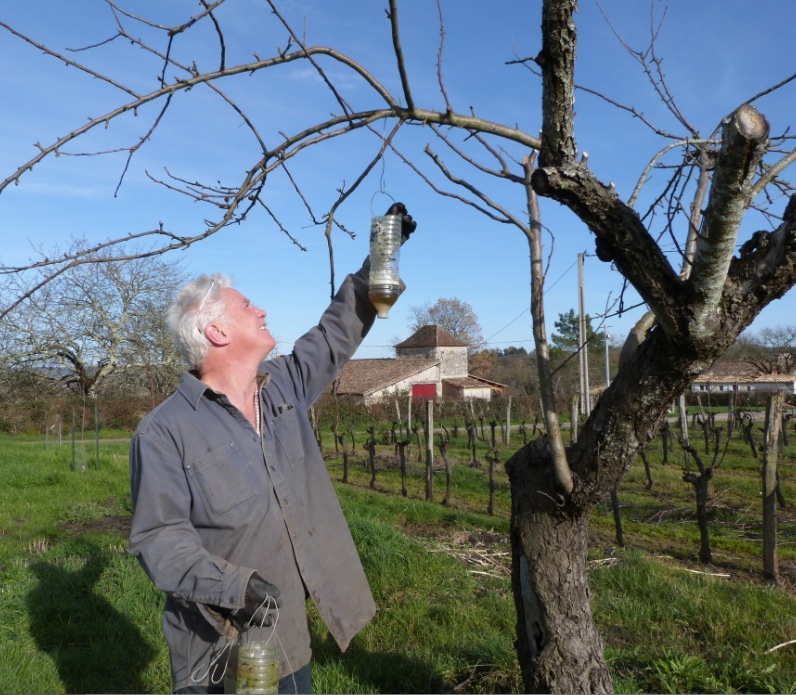
3 thoughts on “Hunt, Cook, Eat (and a recipe for Wild Boar)”
Can we come to dinner next time? We’ll bring an apple crumble made with our own apples and might even manage some cider! Love Sally x
only if we can come too with cakes.
Hilly
Steve and I will bring a kale salad and hungry stomaches! Looking forward to seeing you sometime soon in NYC. x Helen